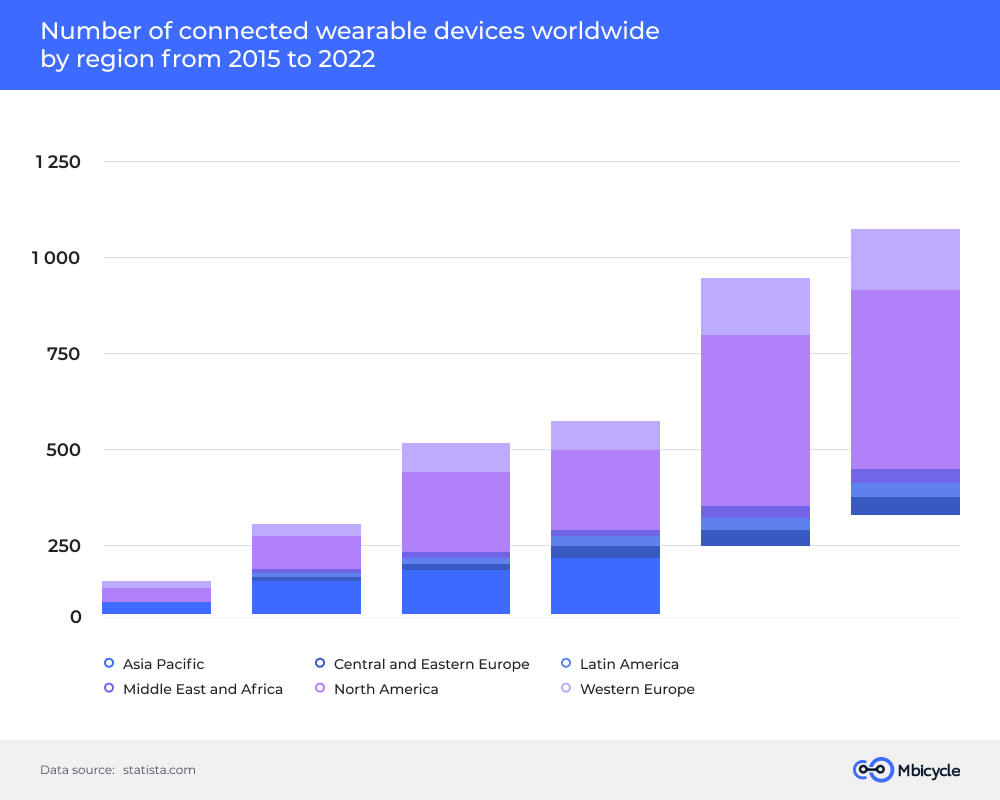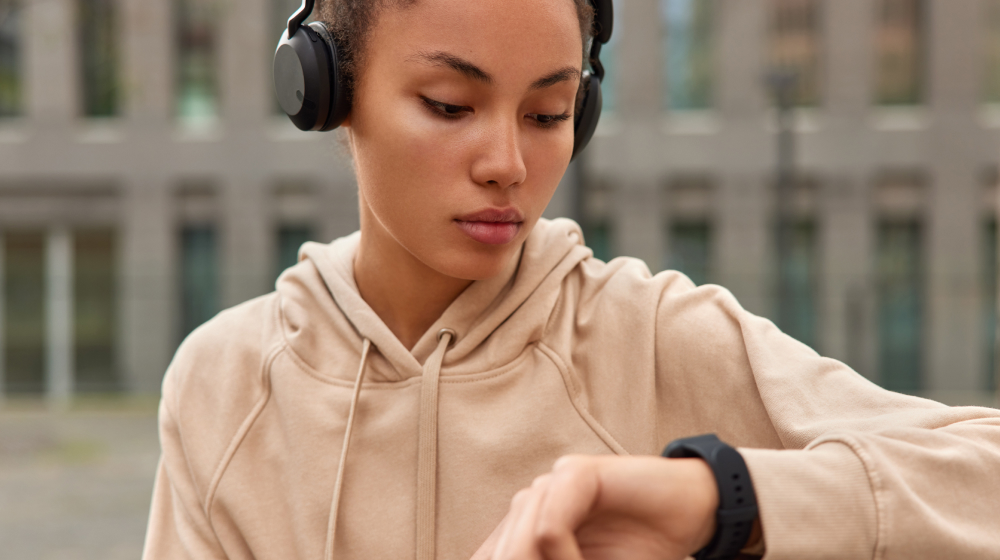Wearable Technology in Professional Sports — How to Adopt it for Better Results
It’s no secret that both amateur and professional athletes always strive for opportunities to improve their performance and gain a competitive advantage. It’s the competitive spirit, as they usually call it! Continuous outsourcing sports software development based on up-to-date technologies has provided new options for improving athletes’ health status, skills, progress, and safety during games, competitions, and workouts.
The sports industry was one of the first to actively adopt wearable devices for their needs, such as tracking athlete health, preventing injury, improving athletic performance, powering team progress, and providing new ways for sports fans to interact with their favorite teams and athletes both at stadiums and via mobile apps.
Today there are highly specialized effective solutions based on using a variety of wearable sports devices for each task and issue.
The Role of Wearables in Sports
Implementing smart wearables solutions helps both amateur and professional athletes track their training progress and sports achievements, monitor their well-being, and avoid injuries during games and practices. This explains the widespread use of this technology across the industry.
The wearables market today has shown significant growth over the past decade and has expanded widely across a variety of areas, including the sports industry. And this boost is just the beginning, as according to Forbes, by 2022 the market of wearable electronics is already expected to reach $27 billion. Moreover, as confirmed in this Statista report, the number of connected wearable devices, as well as their variety, is increasing sharply every year worldwide.

Providing sports analytics
The detailed analysis of large amounts of varied is crucial in the sports world. The use of wearable electronics, whether it be fitness bracelets, sensors integrated into athletes’ equipment or clothing, or sensors installed around the gym or playing field, helps collect a large amount of data on different categories, store it in the cloud and analyze it for further use by team managers, coaches, advertisers, and other stakeholders.
Tracking health indicators
Another important factor that explains the popularity of wearable electronics in sports is real-time tracking of the health of athletes and timely notification of possible injury for the purpose of providing first aid and treatment. Wearables such as monitors of heart rate, blood pressure, blood oxygen enrichment, and others, which are attached to different parts of the athlete’s body or built into the elements of their equipment, track targeted health indicators in real-time throughout the entire workout or sports event.
Improving athletes’ performance
The implementation of wearable devices into daily sports practice also helps athletes to improve their skills and performance. For example, with the help of fitness bracelets or sensors attached to the equipment, athletes can directly track their daily progress and record the workload and body parameters, e.g. heart rate limits, when the training is most productive and impactful.
Throughout the world, smart wearables are becoming an indispensable and popular tool for measuring and improving athletic performance. Wearable devices are already changing the way the sports industry operates, creating a close-knit ecosystem with mobile apps, Bluetooth Low Energy (BLE) sensors, and other tools that sync with each other providing athletes and other stakeholders with the most complete and instant information about their progress and health status.

Wearables to Improve Performance in Sports
A prime example of using wearable technology in sports is implementing them during weight training, tracking the athlete’s body and weights to control and improve the overall performance. This type of activity is usually called velocity-based training (VBT).
VBT is a simple training method that uses smart wear technology to measure the speed of the weight bar and athlete’s body to improve the quality of a workout. This training method is not new and in the last 20 years in professional sports, there have been various technologies for tracking barbell speed. However, with the increase in the availability of accelerometers and wearables, the popularity of such training, as well as its efficiency, has increased significantly.
The VBT sensors should be used to gather more objective and accurate data during strength training. Tracking performance based on movement speed is a departure from traditional measurement methods and, when combined with today’s technology, it can provide an aggregate picture of athletes’ lassitude and their abilities to compete or play.
Mbicycle has long-term experience of cooperation with a US-based startup in developing a basketball sports performance tracking solution from its initial idea to a full-fledged solution for professional athletes, coaches, and teams with branded BLE-based equipment and the official recognition status from the National Association of Basketball Coaches (NABC).

Wearable Technology in Sports Medicine
Another important use of wearable technology in sports, where it can bring benefits and change the approach to training, is the timely prevention of injuries through constant data accumulation on the health of athletes and their instant medical analysis. A good example of using wearable technology in sports medicine is the English Premier League rugby club, which recently launched the first of its kind in world rugby to collect data and then research it to measure the impact of concussion on rugby players.
The measurements are taken via special impact sensors that are worn over the earlobe during rugby matches and provide data on the strength and direction of every hit to the player’s head. The initiative was borrowed from the National Football League in the United States, where similar devices were installed into players’ helmets during games, after which the data was downloaded and analyzed.
![]()
What to Expect in 2022 from Wearables in Sports?
Improving wearable devices, wearbale app development companies are now also playing an increasingly important role in enabling athletes and coaches to better measure and monitor the performance and health parameters on the field. Today it’s no longer the prerogative of elite professional clubs but is an integral part of the coaching process at all levels. Getting in-game data via wearables ultimately enables athletes, both amateur and professional, to maximize their ability, improve performance, avoid injury, and gain a competitive edge on the pitch. With the advancement of wearable devices, sports fans also have more options for tracking the progress of their favorite athletes, watching games and competitions using mobile devices and augmented reality tools, as well as an advanced number of interactive elements across stadiums and sports arenas.
We associate the evolution of the wearable electronics market in 2022 with the growing number of wearable devices, decreasing their size, increasing their power and efficiency of usage. The ever-growing need to gather and analyze data on various sports metrics in the field, rather than in research laboratories, will stimulate companies from the sports and other related industries to innovate software solutions and create devices that are invisible and imperceptible to athletes.
Wearable devices in the near future will not only be smaller but also integrated into uniforms, clothing, footwear, sports equipment, and protective gear. This will allow companies in the industry to maximize not only the amount and quality of data they receive but also to involve more athletes in advanced programs related to the extended use of wearable electronics.







